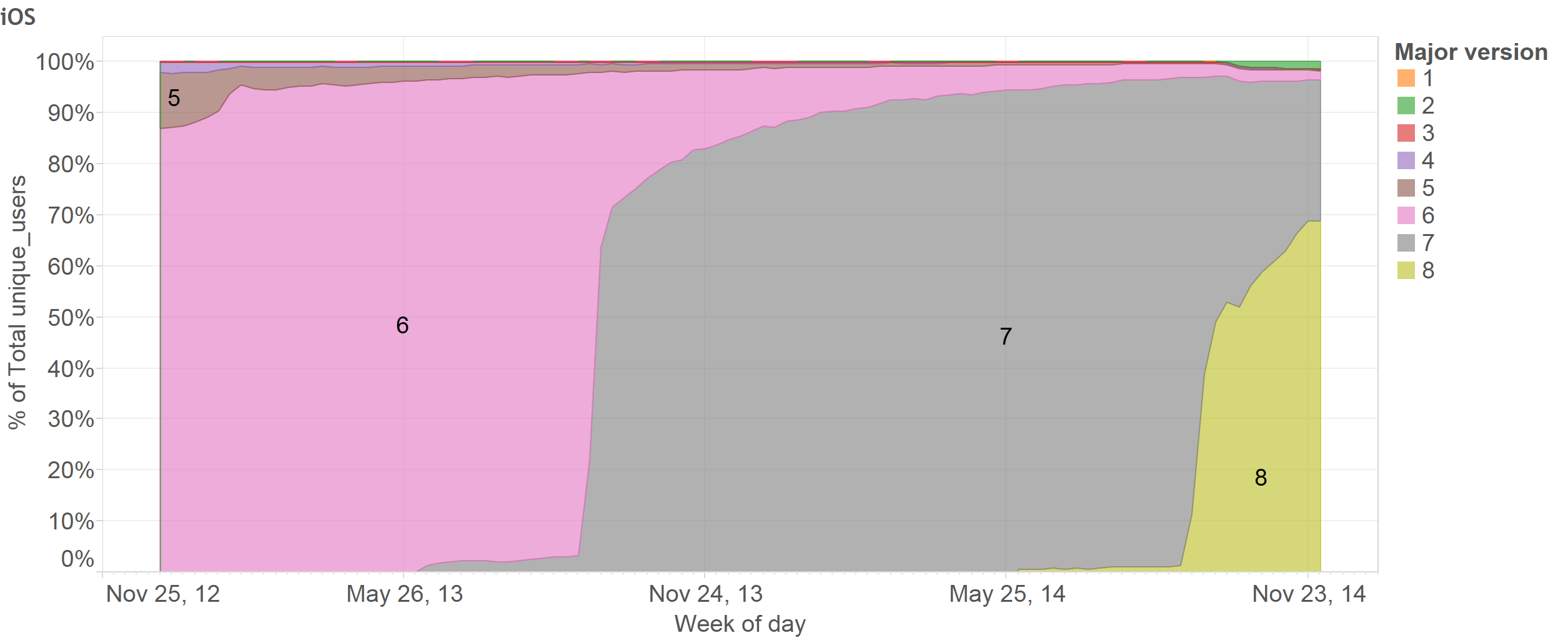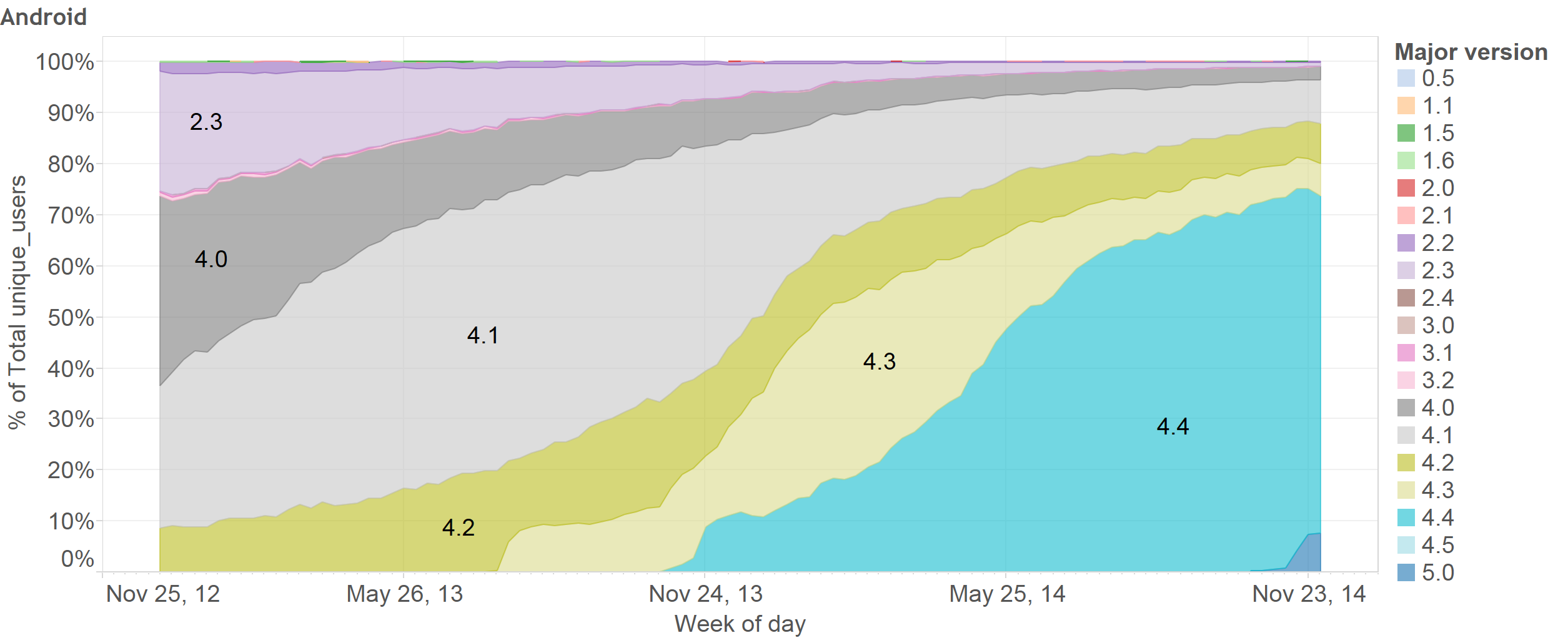Fragmentation isn’t just Android’s problem anymore.
Here’s the last 2 years worth of iOS and Android usage by operating system version for Basecamp, combining our native app usage and our mobile web views:


Fragmentation is the past for Android, but now it’s the present for both of the major mobile operating systems. My big question: will we see either platform be able to converge in the future, or is this the new normal?
These were made with Tableau by Noah, which is really fantastic. Noah’s fantastic too.

Chad Burt
on 02 Dec 14From this graph it appears that at any given tim, you must support 5 versions of Android for 90% of the user base, versus 2 for iOS. It doesn’t appear that the landscape is all that different.
miro majtaz
on 02 Dec 14This is just os fragmentation. The harder part is the Android’s hw fragmentation – various cpus, accelerometers, compasses, screen sizes…
Phil Dokas
on 03 Dec 14It’s worth noting that this comparison was performed at the zenith of fragmentation in iOS’s annual cycle – right as the reverse hockey stick levels off for the slow climb up the second 50%. A point that goes a ways toward undercutting the argument that iOS fragmentation is the new normal.
Matt Lee
on 03 Dec 14Seems like iOS just hides all the little releases that come out better than Android. Apparently since iOS8.0 came out, there have been five point releases.
Adam
on 03 Dec 14How is iOS 2.0 making a comeback in November 2014? (see the green at the top of the chart)
If you look at the graph, at most times during the year one iOS version accounts for 80-90% of all clients. That’s very high.
Mark
on 03 Dec 14This makes sense based on the cost of the respective devices, and their upgrade cycles. My wife, for example, is still on iOS 6 and can’t update on her iPhone 4. But now she has an upgrade and will leap to iOS 8.
jacob
on 03 Dec 14iOS 8 was a strange release in that three things happened:
• The update required ~5GB which, when dealing with devices that are still sold with 16GB total storage, were blocked by insufficient storage space. Combined with a real lack of being able to manage files in a meaningful way, led to casual users to shrug it off.
• iOS 8.0.1 had bugs that caused issues in a small subset of phones (the newly released iPhone 6/6+). Although serious, this was reported as being widespread. See how iOS 7 has that hockey stick growth? That momentum was lost.
• iOS 8 was not as big of an impact as iOS 7. Try explaining Extensions to a casual user. Is that worth dealing with the aforementioned issues? For them, probably not.
Ultimately, you’re effectively dealing with two major releases with hardware that is controlled and widely documented. The only fragmentation comes with different screen resolutions but that’s a small issue, mitigated by Apple’s Auto Layout, compared with the issues that Android faces in terms of hardware diversity.
David Andersen
on 03 Dec 14Absent in these high level charts is any context that explains how different each release is to developers and the corresponding cost of change and maintaining code for older releases. Without that these are just pretty charts. For all I know the difference between each .x release of Android is trivial and it takes several generations of these to be painful. For all I know it’s basically painless to support code for the first release of IOS or Android relative to the current release. I’m experienced in software so my intuition says there is probably some pain but there is no data here explaining this. And it’s probably pretty damn hard to produce such data in a chart.
This discussion is closed.